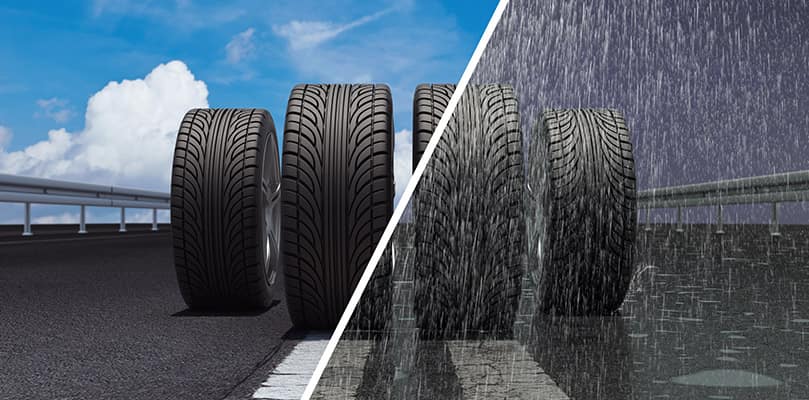Most drivers rarely think about how long their summer tires would last. Some can’t even tell the difference between summer and an all-season tire.
Yet, they always expect their cars to perform optimally on the road.
Are you one of those drivers? Perhaps you are unsure if your summer tires will last longer?
This guide answers that question and more.
Summer tires typically last 60,000-80,000 miles or 6-8 years when not used much. A quick way to determine this is to check the warranty of your tires. Then the date when you had replaced those tires, and then you’ll know the exact number.
Table of Contents
From there, you will get a good idea of how your summer tire will last. Generally, summer tires can last you between 20,000 to 40,000 miles. Of course, that will depend on your driving habits and weather conditions.
Premium tires such as Bridgestone offer up to an 80,000-mile treadwear warranty. Use that kind of information to estimate your summer tire’s time.
Remember, taking good care of your summer tires contributes to how long they will last. That includes maintaining pressure on your tires. Also, check your summer tires regularly.
Especially before you travel for long vacations.
When you leave your summer tires underinflated, not only will they have heavy rolling resistance. But they will cause low fuel efficiency, too. Furthermore, your summer tires will wear more rapidly.
Summer tires usually provide fewer miles than all-season tires.
So when you use all-season, you should expect the best mileage. On the flip side, summer tires offer more traction and a comfortable driving experience.
Take a good look at your summer tires. You will notice that they have shallow tread depths. Other than that, summer tires have wide circumferential grooves. They are there to evacuate water to resist hydroplaning.
They are there to evacuate water to resist hydroplaning.
If you don’t use your summer tires much, they can last you 6 to 8 years. But that will depend on two things: One, on where you store the summer tires. Two, on the weather conditions of your region.
Remember, summer tires don’t come cheap. You pay a lot to replace or even to repair them. So storing them in proper storage is essential.
Use the following tips to store your summer tires properly to last you longer:

You can’t use the same summer tires for more than ten years. Once they are over ten years, you should replace them. For the most part, your summer tires are expected not to last more than three years.
Still, it is far better to replace them early than to put your life at risk.
Do summer tires last longer than other types?Some car owners believe summer tires last more than other tires. Nothing could be further than the truth. Summer tires have shallower treads and fewer grooves, so they tend to wear pretty fast.
Summer tires will wear faster if you are a fast driver. Or if you don’t take good care of them. They are suitable for supercars such as McLaren, Porsche, and Bentley. When you use summer tires in temperatures below 45 degrees, they perform well. The average temperatures allow supercars to be super quick.
The average temperatures allow supercars to be super quick.
In a nutshell, summer tires will wear faster than other tires.
Why?
Because summer tires were designed not to last years.
While summer tires provide traction and good wear in summer, they are not necessarily suitable for winter. In winter, the rubber of summer tires tends to become harder.
Hence, in winter, they wear out ever quite faster.
Summer tires offer optimum performance on wet and dry surfaces. For example, Ultra-High-Performance tires deliver exceptional traction on dry and wet roads. Still, Ultra-High-Performance summer tires don’t last longer than other types of tires.
Use the following tips to check your summer tires:

Overall, summer tires perform better than all-season tires. Thanks to the rubber compound in summer tires, they perform better in wet conditions. The compound also helps them withstand hot conditions.
Summer tires have an impressive rating of 186 mph. In comparison, all-season tires have a modest 149 mph rating. Now you understand why summer tires wear faster than all-season tires.
They are performance tires that improve the speed of your car. But in snow or freezing weather conditions, you can’t count on summer tires.
All-season tires will be the best option for those weather conditions.
Not all summer tires will be suitable for the climate you live in. Or the kind of car that you drive. It is always advisable to research the tire brand before buying it.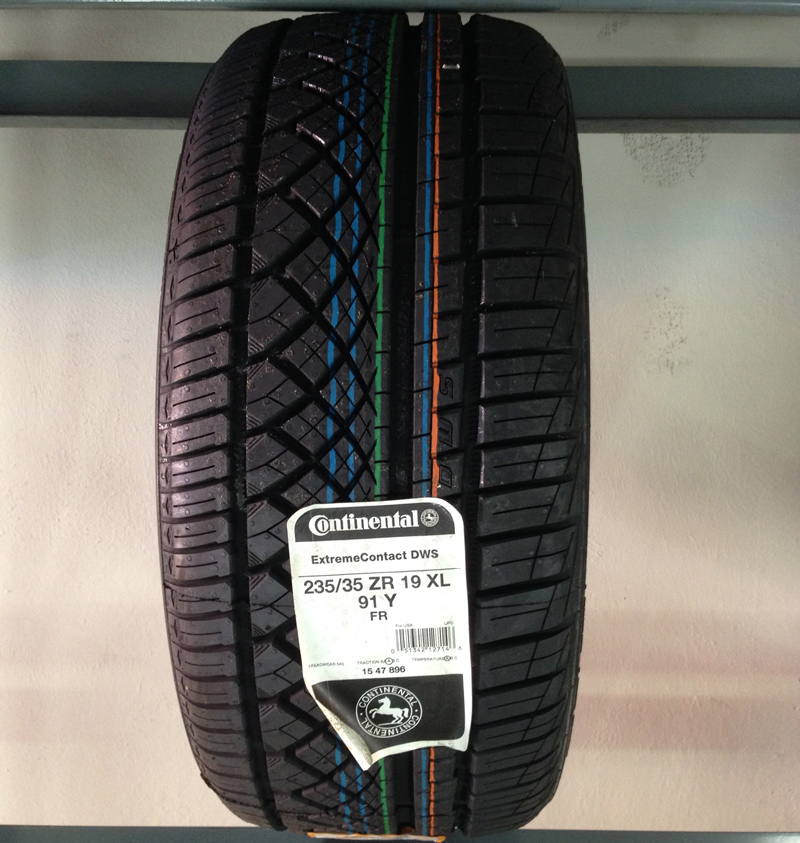
We recommend that you always balance all your four summer tires. If you are unsure about this, ask your tire technicians to check them for you. They will ensure all your vehicle’s tires meet the manufacturer’s recommended size, speed, load capacity, and rating.
And they will tell you if you need to replace your summer tires.
Are summer tires better on the highway?Most tire manufacturers optimize summer tires for excellent performance on the highway. Hence, summer tires outperform other tires on the road. The only drawback is that they don’t offer much traction in winter.
If you live in a region that has 44°F temperatures, summer tires will be a perfect choice. They are also well-suited for open roads and highways. Or just any road that allows you to put your foot on the accelerator.
Most car owners struggle to choose the right summer tire. But knowing which summer tires to choose is crucial. Summer tires that stand above the rest when it comes to outstanding performance on the highway include the following:
 They offer exceptional steering precision and stability on the highway.
They offer exceptional steering precision and stability on the highway.All-in-all, most summer tires provide better handling on the highway. Regardless of weather conditions. What’s more, they are quieter than all-season tires.
‘This is because they have fewer treads than all-season tires.
Final ThoughtsKeep this in mind; old summer tires are dangerous for you and other drivers. It would help if you always replace them, regardless of tread depth.
If your car needs new summer tires, don’t settle for old tires just because “they are affordable.” Buy brand-new tires; you’ll have peace of mind.
A good high-profile example of how dangerous old tires can be is the accident of the talented actor Paul Walker. Investigations into his accident found that his Porsche Carrera GT had 9-year-old tires.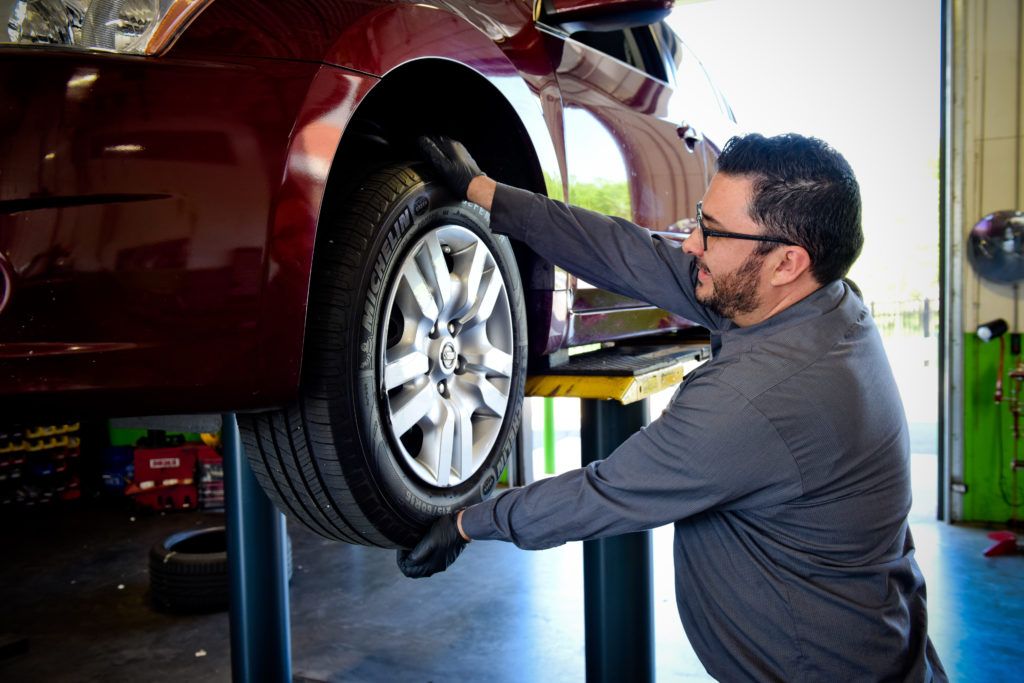
Signs that your summer tires are old include cracks and bulges, frequent air pressure issues, and discomfort when you try to accelerate. Once you notice any of those signs, don’t waste time.
Take your vehicle to a wheel expert to look at your tires.
Was this article helpful?
Great!
Click to share...
Did you find wrong information or was something missing?
We would love to hear your thoughts! (PS: We read ALL feedback)
Name (not required)
Email (not required)
Message
The question, "How long does a tire last?" tends to be followed by several others like, “What causes a tire to wear? When should tires be replaced? What can be done to make tires last longer?” Fortunately, we can help provide clarity around these questions.
There is no exact answer to how long a particular tire will last, but there are things a driver can do to get the most out of their tire investment and avoid driving on unsafe tires. On average, people drive between 12,000 to 15,000 miles a year, which means the average good quality all-season tire will last somewhere between three and five years, depending on maintenance, driving style and conditions, etc.
The National Highway Traffic Safety Association (NHTSA) states a driver is three times more likely to be involved in a crash caused by poor tire condition. Safer is smarter when it comes to the health of tires, so if there is ever a question on tread wear or age, have the tires checked.
Multiple factors play a role in how long a tire may remain in service. Miles driven, road conditions, driving style, maintenance and age all affect how long a tire lasts.
Worn vs. Aged
Tires naturally wear the more they are driven and worn out tires provide reduced traction compared to those with adequate tread, especially in adverse weather conditions.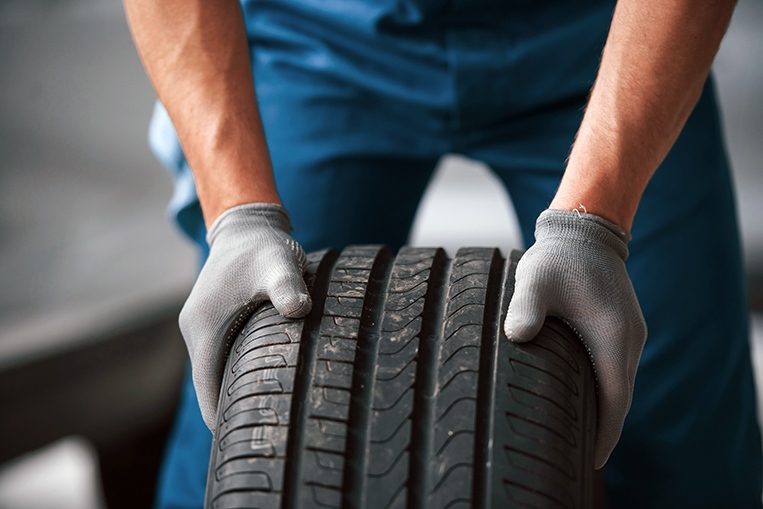 Most drivers understand worn out tires (remaining tread depth at or below 2/32”) should be removed from service.
Most drivers understand worn out tires (remaining tread depth at or below 2/32”) should be removed from service.
Many drivers are not aware that minimally used tires, like the ones on recreational vehicles, collectible cars, or even spare tires, tend to experience aging instead of wearing, due to a lack of driving. An aged tire has a substantial amount of tread; however, the structural integrity of the tire is weaker because the tire needs to be driven for the chemicals in the rubber to remain effective.
Curbs, Potholes, and Other Hazards
Hitting curbs or driving on roads in poor condition (potholes, broken pavement, poorly graded railroad crossings, unpaved roads, etc.) can cause misalignment, and suspension damage that affects tire wear. If your daily drive includes these challenges, be sure to schedule annual suspension, alignment and tire checks.
Weather Conditions
Driving in poor weather conditions like ice, snow, and rain can cause tires to wear quicker because they must work harder to maintain traction.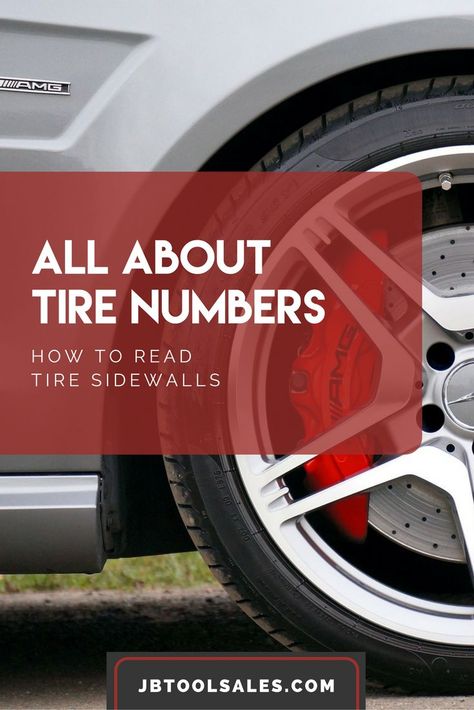 Purchasing tires that are specially engineered to perform in specific weather conditions can provide drivers with an extra measure of traction and control (meaning greater safety) while delivering good treadwear.
Purchasing tires that are specially engineered to perform in specific weather conditions can provide drivers with an extra measure of traction and control (meaning greater safety) while delivering good treadwear.
Bridgestone offers different types of tires designed to keep you and your car safe during any weather or road condition. For example, Bridgestone's Blizzak tire series is built to perform in harsh winter weather conditions providing durable traction on snowy and icy roads, and the Dueler tire series is one of several that offer a secure grip on wet road conditions for areas that experience heavy rain.
Poor Driving Habits
Poor driving habits like hard cornering, quick acceleration, and sudden braking can increase the stress on tires tremendously, causing them to wear rapidly. Drivers can extend the life of their tires significantly by avoiding aggressive driving.
Neglected Maintenance
It is important to regularly have tires checked for damage, to maintain air pressure levels, and to keep tires aligned and rotated.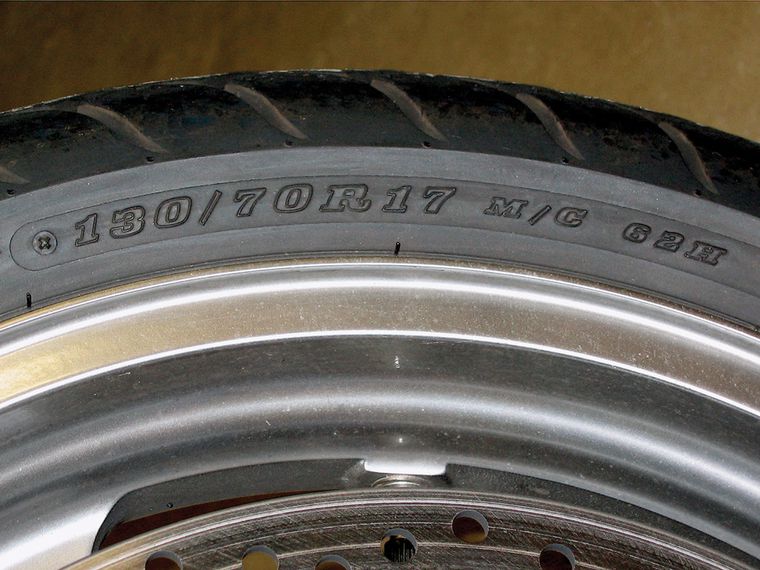 Without proper maintenance, tire life can be reduced by as much as half - even more, in some cases.
Without proper maintenance, tire life can be reduced by as much as half - even more, in some cases.
If the below signs are evident with your tires, it may be time to have them replaced.
Low Tread Depth
Tread loss is a significant sign a tire needs to be replaced. Low tread is a sign driver can physically see happening on their tire. Depending on the part of the tire that is wearing, there may be other problems with the vehicle.
Pronounced inner or outer shoulder wear: tires are misaligned
Edge of the shoulder wear: tires are under-inflated, need to be rotated or both.
Center wear: tires may be overinflated or have been subjected to extremely hard acceleration.
Cupped wear: the vehicle is experiencing suspension problems
All tires have tread wear indicators built-in, but if the tread looks low take time to do the penny test on the tires.
Rough Drive
If you’re experiencing a vibration (particularly if it just started), or high (and increasing) levels of tire noise it may be a sign your tires are out of balance, not wearing properly or have a structural issue. In some cases, this may affect safety, so have your tires checked by a qualified professional asap.
In some cases, this may affect safety, so have your tires checked by a qualified professional asap.
DOT Number
The U.S. Department of Transportation (DOT) number on the tire’s sidewall is another way to help keep track of when they need to be replaced. It’s easy to identify - look for the letters “DOT” followed by eleven or twelve letters and numbers. On tires made after the year 2000 the final four digits signify the week and year of manufacture. So, a tire with “3618” would have been made in the 36th week or 2018. A tire that has a 3-digit week-and-year code means the tire was made before the year 2000 and should be replaced due to age.
Bridgestone recommends that its Bridgestone or Firestone brand tires be removed from service after ten years regardless of their remaining tread depth. They also recommend periodic inspections by a qualified technician for damage such as punctures, impact damage, signs of improper inflation or overloading, or other conditions resulting from the use or misuse of the tire.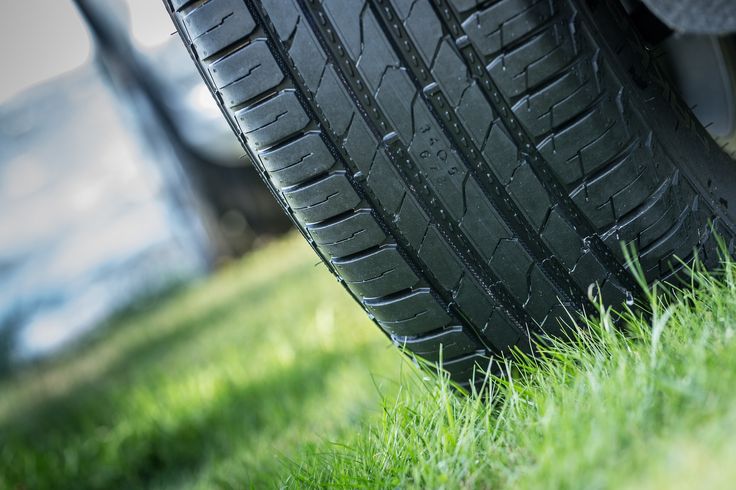
Tires are both one of the largest maintenance expenses a vehicle owner is likely to face, and one of the most critical in terms of driving safety and performance. For both reasons it’s important to care for them properly. Bottom line: good maintenance and driving habits help keep drivers safe, and it saves them money by extending tire life.
Easy Does It
Tire life can be reduced by as much as half when they’re subjected to a lot of hard braking and aggressive acceleration from a standstill. Avoiding tailgating to reduce the need for frequent hard braking will increase tire life. Easing into the throttle when pulling away from a stop reduces strain on the tires and improves wear. Slowing before sharp corners also reduces stress on tires, as does avoiding potholes and broken pavement when possible. If you’re interested in spending less on tires, following these steps can help.
Regular Maintenance
Another way to extend tire life is to keep up with the proper maintenance of a vehicle and its tires. A couple of things you can do yourself are to check the air pressure and tread depth. You should have a qualified technician periodically check their balance and alignment and be sure to have tires rotated at regular intervals. maintenance is essential for your tires to perform their best and last their longest.
A couple of things you can do yourself are to check the air pressure and tread depth. You should have a qualified technician periodically check their balance and alignment and be sure to have tires rotated at regular intervals. maintenance is essential for your tires to perform their best and last their longest.
Related materials
7 rubber signals: what the tire says about car problems
How do you know when tires are completely worn out and it's time to change them? Everything is simple. For summer tires, the limit is 1.6 mm of residual tread depth, and for winter (or all-season tires used in winter) - 4 mm. Modern summer tires can travel from 40,000 to 70,000 km, depending on driving style and vehicle characteristics. An average motorist rolls such a mileage on summer tires in 2-3 seasons. Moreover, wear implies not only a decrease in tread depth. For millions of cycles of deformation, the strength of the carcass and its adhesion to the layers of the rubber compound are violated. In short, every 2-3 years you should buy a new set of tires.
In short, every 2-3 years you should buy a new set of tires.
In case of irreparable damage to one of the tires and a relatively high total mileage of the kit, it is also worth considering replacing it. Well, or about buying at least a pair of new tires, which, for any type of drive, should be installed on the front axle. We put two tires back - the most decent of the remaining ones.
Many motorists drive only a few thousand kilometers a year. This does not mean that the tires will serve you for several decades. According to Russian requirements (GOST 4754-97), the service life of passenger car tires is 5 years from the date of manufacture. And for example, Continental recommends that all car tires (including the spare tire) older than 10 years old should be replaced with new ones. Therefore, with small runs, you can navigate for ten years. The date of manufacture of the tire is indicated on the sidewall. Usually it is an oval with four numbers.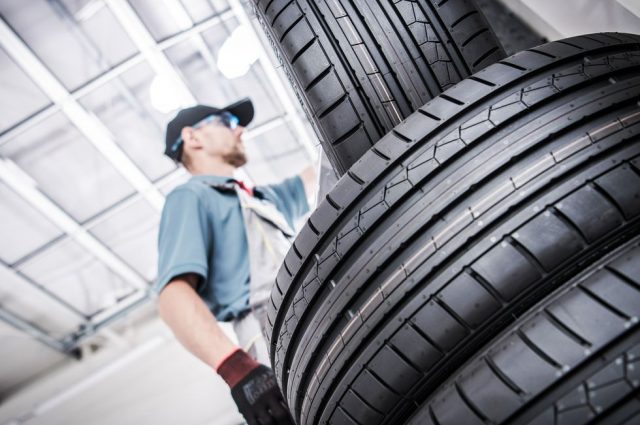 The first two are the ordinal number of the week in the year, the last two indicate the year.
The first two are the ordinal number of the week in the year, the last two indicate the year.
Related materials
How to change the car yourself - detailed instructions
Tires should be rotated periodically in accordance with the vehicle manufacturer's recommendations - information on this can be found in the owner's manual.
We can advise you to carefully use the tires and, most importantly, to store them correctly in the off-season. First of all, during storage, it is important to exclude direct sunlight from hitting the tires, which greatly age the rubber. Tires without rims should be placed vertically, and stacked on rims.
And before installing tires on a car at the beginning of the season, evaluate their condition. There should be no cracks in the tread and sidewalls. The tire should not be dry, it should remain rubbery and not look like baked plastic.
Related materials
Driving on badly worn tires - will I be fined or not?
Winter tires have a much shorter life span. They almost always fail due to the wear of the treadmill, because the tread of a new tire is 7–8 mm, and only 3–4 mm remain working height. If the tires are studded, then with such wear there are very few metal elements left, and the tire will not provide adequate safety when driving on a winter road. However, not only spikes, but also Velcro, with such a degree of wear, also lose most of their capabilities.
The real life of winter tires rarely exceeds 30,000 km. "Bald" winter tires without studs can be re-rolled in summer, but their grip on hot road surfaces will be very poor. This must be taken into account, especially when braking.
***
So: tires that have not yet worn out along the tread (that is, up to 1.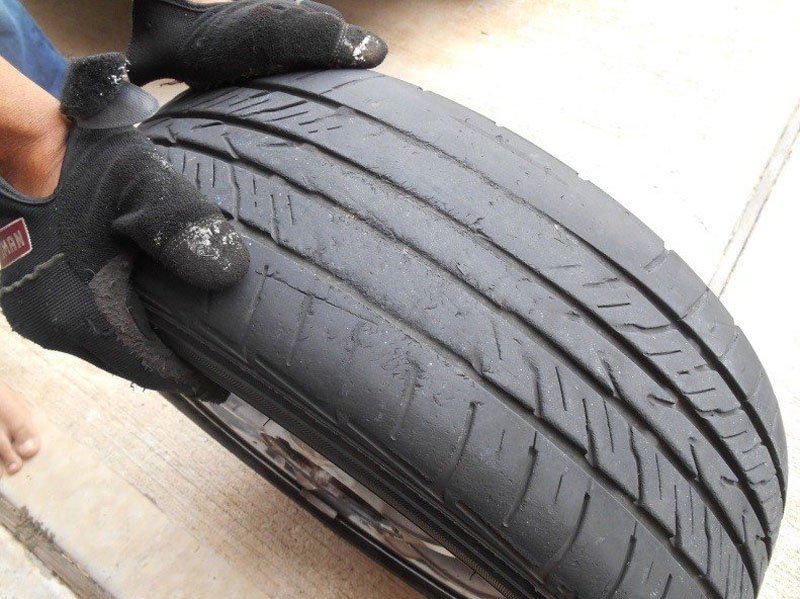 6 mm tread depth for summer tires, 4 mm for winter tires) are changed either ten years after the date of issue, or when the rubber layer cracks tires or damage.
6 mm tread depth for summer tires, 4 mm for winter tires) are changed either ten years after the date of issue, or when the rubber layer cracks tires or damage.
Our new video
Geely Tugella: just look!
Youtube channel Behind the wheel gained 800 thousand subscribers
Instead of Largus and GAZelle: 5 shock impressions from the new "Chinese"
Like the article? Subscribe and you will always be in the know!
Driving on Yandex.Zen
News smi2.ru
Consumer disputes over the age of tires have not subsided for several seasons. Buyers are excited that the warranty period for tires is limited to 5-6 years according to GOST, and after the expiration of this period, the rubber becomes unusable.
Is this really the case, read this article.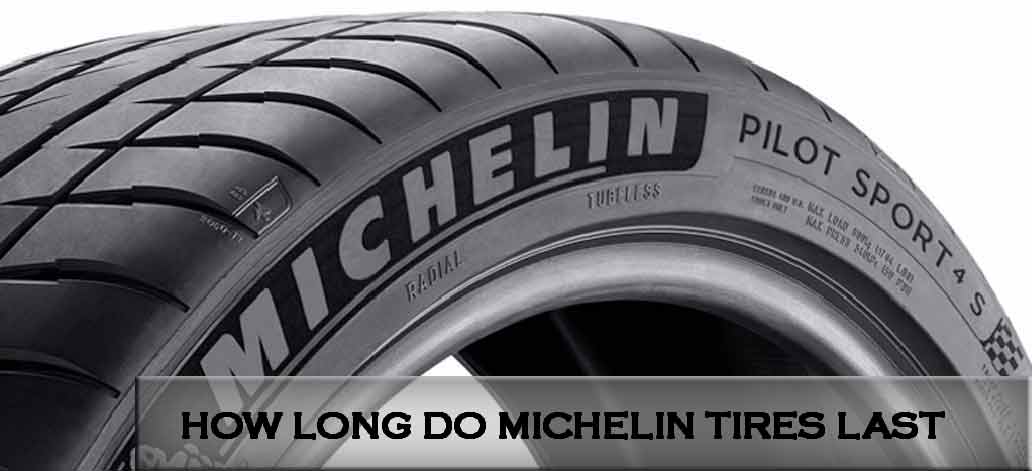
Manufacturers of most brands for their products set a shelf life of 5 years and a service life of 5 years as well .
The shelf life of a tire is the period during which it retains its performance when properly stored.
The end of this period does not mean that the tires have become unusable . A shelf life of 5 years is given by manufacturers because, by law, they cannot set a shelf life higher than the service life. Tires over 5 years of storage cannot be called damaged or defective, their technical characteristics may be slightly reduced. American researchers argue that the period of storage of "shoes" must be at least 10 years. Experts from Germany are sure that it cannot exceed 6 years.
The expiration date of tires is the warranty period during which the manufacturer is responsible for the quality and condition of the tire if it was used for its intended purpose without violating the operating rules.
According to Russian legislation (GOST 5513, GOST 4754-97) , the service life of tires is 5 years from the date of manufacture.
How can I find out the date of manufacture of tires?
You can find out the age of tires by a special DOT code. Tires manufactured after 2000 in the DOT code contain two pairs of numbers, where the first pair indicates the week number of the year, and the second pair indicates the year. Earlier tires before 2000 have 3 numbers in their composition, where the first two digits are the week number, and the last one is the year (see the transcript in the photo).
Determination of the average shelf life of a tire according to GOST and operating conditions.
- The symbol ZR denotes tires for high-speed cars. They are recommended to be used at speeds over 240 km/h. up to 6 years
- Tires with the H symbol are used at a maximum speed of 210 km/h. within 5 years.
- The sign S symbolizes the maximum permissible speed of 180 km/h. and operational period of 4-5 years.
Most tire manufacturers do not agree that tire life is limited to 5 years. Each company has its own opinion on this matter. We analyzed several of them and the information they posted on their official websites.
Michelin
The French tire manufacturer Michelin has become famous for its active fight against the perception of the rapid aging of tires as a perishable product. Her information campaign "Tires Are Not Bananas" created a lot of noise in the automotive environment. According to the representative office, several test trials were carried out in Saudi Arabia, South Korea and Germany. As a result of testing, no difference was found between new tires and tires stored for 3 years. They were tested for various characteristics such as rolling resistance, high speed durability, etc.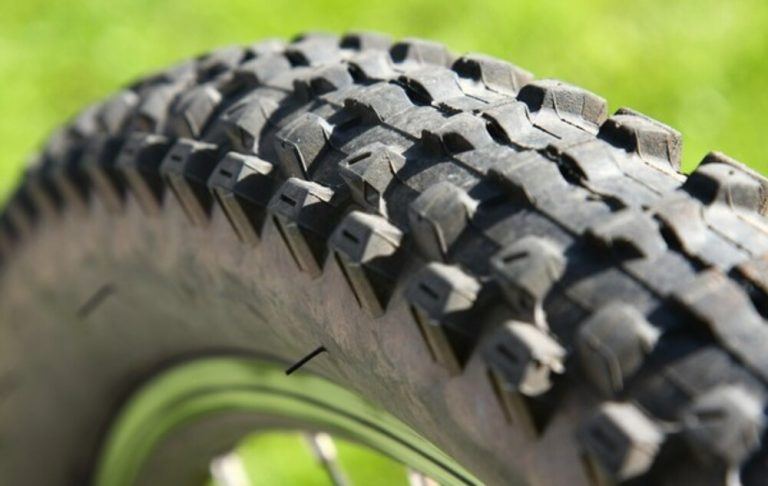 Tires with a year life were approximately equal in performance to 10-year unused tyres.
Tires with a year life were approximately equal in performance to 10-year unused tyres.
Michelin focuses the attention of car owners on the fact that tires are not a perishable product, their shelf life is not as important as the service life is important, starting from the date the tires are installed on the rims. It is from this moment that the tire is subjected to all tests: pressure, temperature changes, wear, contact with uneven and sharp coatings, etc.
Continental
On the Russian official website of Continental, we found the following information on the expiration dates of tires.
“When a tire is stored in the correct position and under the recommended conditions, it will not lose its original balanced performance for 5 years from the date of manufacture of the tire.
A properly maintained, unused tire less than 5 years old can be sold as a new tire and used normally.
Continental recommends replacing all tires (including spares) with a sidewall date greater than 10 years.
Nokian
The following information is posted on the Nokian official website:
“Tire life is not defined by law, but tires can only be considered “new” if they have been manufactured within the last five years. The recommended service life of tires is six years and the recommended maximum period is 10 years.
The opinion of our specialists, based on many years of experience, coincides with the opinion of manufacturers: the shelf life is 5 years + the service life is up to 10 years. Moreover, more "adult" tires, in our opinion, are of better quality.
To keep tires as long as possible, they are stored in compliance with all rules and recommendations. The main condition is a cool, ventilated, darkened room away from oils, paints, ozone, and heat sources.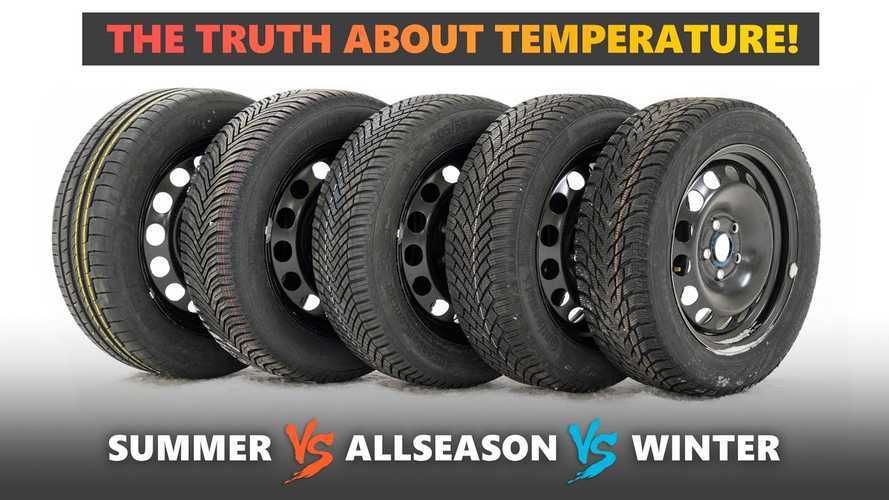
Rubber products tend to lose their performance over the years. To prevent and slow down this process, manufacturers add polymers to the rubber compound. They prevent oxidative processes that occur due to the interaction of protectors with oxygen and ozone.
The following are the main conditions for the proper storage of tires in accordance with GOST 24779-81:
Maintaining a constant regime without sudden jumps, slight temperature fluctuations from -30°С to +35°С are allowed;
Provide a low humidity level of 50-80% in a dry, ventilated cool room;
Avoid direct sunlight, use darkened hangars, shield heat sources;
Keep away from sources of heat;
Tires should not come into contact with corrosive, copper materials.
Avoid kinking, loading or positioning on an uneven surface.
Avoid contact with oils, organic solvents, acids, alkalis, fuels and lubricants on the tire surface.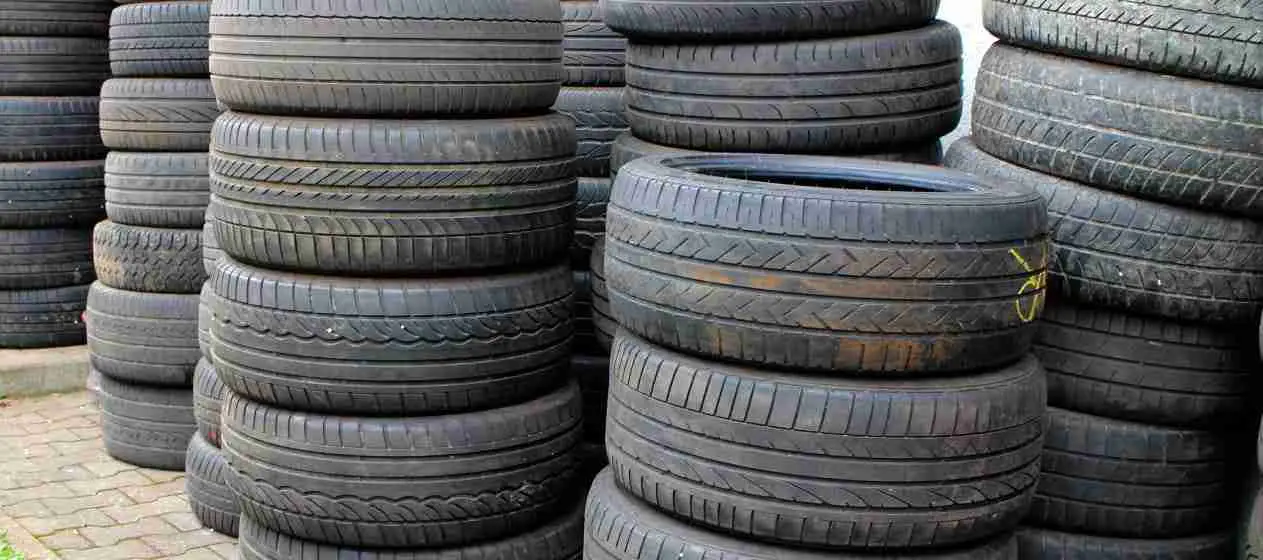 It is forbidden to lay tires on a wet and dirty surface.
It is forbidden to lay tires on a wet and dirty surface.
In the warm season, when storing tires outside, they should be covered with light-tight material and raised above ground level to ensure ventilation and prevent the occurrence of the greenhouse effect.
Storage on reflective, light and heat absorbing surfaces is prohibited.
Keep away from chemicals, oils, paints, open flames, electric motors that produce ozone.
Used tires must be washed and dried.
Tires without rims should be stored upright.
The service life depends on many factors: the load on the car, the quality of the roads, the driving style, the distance traveled, tire damage, etc. To increase their service life, follow these rules:
Check tire pressure every 2-3 weeks. With reduced pressure, tire wear increases by the equivalent of a % reduction.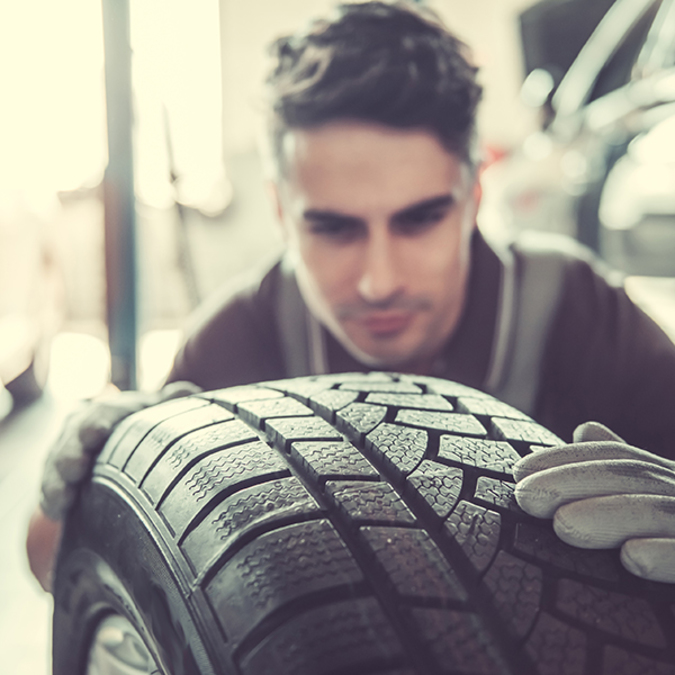 For example, a 15% reduction in pressure can result in a 15% reduction in service life. Inflated tires are less scary.
For example, a 15% reduction in pressure can result in a 15% reduction in service life. Inflated tires are less scary.
The wear of the front tires is always significantly higher than the rear ones, so it is recommended to swap them after some time, carefully watching the direction of the tread pattern and the direction of rotation.
Proper alignment of tires in relation to rims. If the direction is not the same, then performance is significantly reduced.
To prevent damage to the sidewalls of tires, avoid close proximity to curbs and high ledges.
Wash off dirt from the surface of the rubber and from deep grooves with special cleaning agents.
Adhere to an even driving style without harsh brakes and quick starts.
Do not overload the car beyond the norm. 20% excess weight leads to a 30% loss of tire life.
Keep the wheels balanced and check the alignment angles annually.